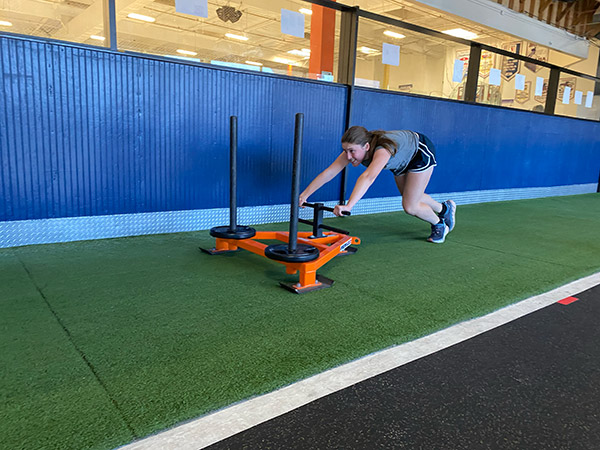Have you ever wanted to start working out and getting in shape? Once you were motivated, did you have a hard time figuring out what to do for your workouts? Did you ever give up when you were confused?
In this article, the goal is to give you a general roadmap to design your own programs!
Please keep in mind that this isn’t the only way to design a workout. And keep in mind, a program is only as good as your consistency! So make a program that YOU will enjoy doing.
Step 1: Determine your goal. Keep it simple.
(Lose fat, gain muscle, sleep better, have more energy, etc.)
Step 2: How many days a week can you commit to?
For most people who are starting out, I recommend at least 2 days a week to start. This will help avoid burnout and help you stay committed in the long run. Once you are consistent with 2 days a week, try 3, then 4, and so on.
Step 3: Write it down.
Write down your goals. Write down your plan. Write down the workouts you’re doing and how you feel afterwards. Write down where you struggled and what you enjoyed in the workout. Write down how you feel the next day and any adjustments you might make in response. Write down whatever you feel is going to help you. The plan should be fluid and allow for you to tweak it as you go. It doesn’t have to be a novel, but seeing your plan in writing can help you stick to it and make informed decisions as you progress.
Step 4: Start with full-body workouts.
A full-body workout is a workout that targets every muscle group in the body. 2 full-body days are a great way to introduce you to fitness. It also teaches you how your body will feel. Once you get more experienced, you can do different workout splits including push/pull, upper body/lower body, and so on. But for the purpose of this article, let’s stick with full body.
Step 5: Determine how you’re going to progressive overload.
Progressive overload is a way of your body getting a new stimulus so you can get the adaptation you’re looking for. You should try and progressive overload every week in your workouts. In order to progressive overload, you can add more weight to exercises, do more reps, do more sets, decrease your rest times in between sets, increase the days you’re coming into the gym, and many more. Our bodies are pretty adaptable so we always need new stimuli. Keep in mind you don’t necessarily have to change exercises all of the time; as long as you change other things first, you should be good!
Step 6: Don’t try to do too much too fast.
This might sound like common sense, but don’t push yourself too hard at first. For one, you may hurt yourself. Second, you will mentally burn out and give up. When looking to progress an exercise, only change one variable at a time. For example, if you’ve been doing 3 sets of 10 body weight squats, add 10 pounds but keep the sets and reps the same. If you’ve been sedentary for a while, give yourself rest days in between workouts. Find a fun and effective way to actively recover, such as going for a walk, hiking, swimming, yoga, or playing with your kids and pets. Exercise should be challenging, but it doesn’t have to be high-intensity 7 days a week for it to be effective. In fact, doing too much too fast can actually hinder your progress!
In the end, find a program that works for you. If you like having the freedom to choose what exercises you’re doing and it gives you a sense of ownership over the program, then follow the steps above and get after it. If you are someone who likes more structure and needs guidance, find a strength coach that can help you put together the plan that’s right for you. Either way, remember that exercise should be enjoyable, you should have a goal you are working towards, and it’s a process that will take time.
Keep it simple and have fun!

